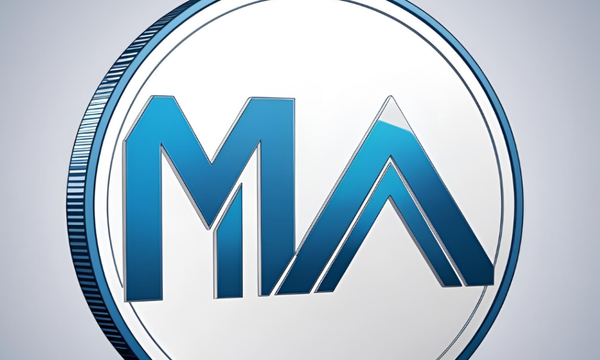NeuroSymbolic AI Emerges As Solution To Web3 Security Challenges

CoinDesk published an opinion piece June 5 arguing that NeuroSymbolic AI represents the future of Web3 development. Authors Ramesh Ramadoss and John deVadoss contend that large language models pose systemic risks to decentralized systems. The article presents NeuroSymbolic AI as a solution that combines neural networks with symbolic reasoning to create more transparent and reliable systems.
The authors identify five major problems with current LLM implementations in Web3. These include hallucinations that could corrupt smart contract execution, prompt injection vulnerabilities that might compromise wallet security, and deceptive capabilities that could manipulate governance proposals. They also cite fake alignment issues where models appear ethical but lack genuine value commitment, plus opacity problems that prevent proper reasoning verification in critical applications.
Growing Concerns About LLM Security In Blockchain Applications
Security vulnerabilities in AI systems have become a pressing concern across the cryptocurrency industry. BizTech Magazine reported in February 2025 that LLM hallucinations can lead to significant business risks, particularly in regulated industries like finance. The publication noted that false information generated with high confidence can result in legal penalties and financial losses when critical decisions rely on flawed AI outputs.
Research from Lasso Security found that popular coding assistants frequently recommend nonexistent software packages. The Register reported in April 2025 that approximately 5.2% of commercial model suggestions reference packages that do not exist. This phenomenon, dubbed "slopsquatting," allows attackers to create malicious packages under hallucinated names and distribute them through legitimate repositories.
The security implications extend beyond simple errors. OWASP identified misinformation as a core LLM vulnerability in 2025, noting that false outputs can appear credible while causing security breaches and reputational damage. The organization's security framework emphasizes that LLMs often generate fabricated content with confidence levels that mask their unreliability.
Web3 Industry Adopts AI-Enhanced Smart Contracts
Despite security concerns, AI integration in Web3 applications continues expanding rapidly. Codora reported in March 2025 that AI-powered smart contracts are transforming industries through automation and enhanced decision-making capabilities. These contracts leverage machine learning and natural language processing to analyze data, predict outcomes, and execute dynamic responses to changing conditions.
The DeFi sector shows particular enthusiasm for AI integration. Onchain Research documented that the AI agent token market reached $8 billion in market capitalization by December 2024. Projects like SingularityDAO and Numerai demonstrate how AI can optimize yield farming strategies and automate investment decisions based on real-time market analysis.
Investment patterns reflect growing institutional confidence in AI-Web3 convergence. Invezz reported in March 2025 that the global Web3 market reached $2.25 billion in 2023, with projections showing 49.3% compound annual growth through 2030. The publication highlighted regulatory clarity as a key catalyst for investment in tokenized AI economies.
Market Implications And Future Development Paths
Industry experts predict 2025 will mark a turning point for AI agents in Web3 ecosystems. Cointelegraph reported in December 2024 that Web3 currently hosts approximately 10,000 AI agents earning millions weekly from on-chain activities. VanEck forecasts this number could reach one million AI agents by end of 2025, with cryptocurrency staking and automated trading as primary use cases.
The convergence creates new business models beyond traditional token economics. Platforms now emerge that tokenize AI services and compute resources, allowing entrepreneurs to monetize AI tools through decentralized marketplaces. This trend aligns with the broader Web3 shift toward decentralized ownership and removes dependence on centralized cloud providers for AI inference.
However, challenges remain substantial. Technical hurdles include scalability limitations, interoperability requirements across multiple blockchains, and user experience friction. Regulatory uncertainty continues affecting institutional adoption, while centralization risks emerge as some AI-enhanced protocols rely on traditional cloud infrastructure for complex computations.
The NeuroSymbolic approach proposed by deVadoss and Ramadoss offers potential solutions to these challenges. By combining explicit rule-based logic with neural network capabilities, such systems could provide the auditability and resistance to manipulation that Web3 applications require. Whether this framework gains adoption will likely depend on developer tooling availability and clear performance advantages over existing LLM implementations.
Related Reading on DAO Times
For readers interested in the governance and organizational aspects of decentralized AI development, DAO Times provides a comprehensive guide to DAO tools for 2025. This detailed resource covers AI-integrated governance platforms, cross-chain coordination tools, and treasury management solutions that DAOs use to organize decentralized AI projects. The guide examines how AI integration enhances DAO operations through automated proposal analysis, participant role optimization, and streamlined decision-making processes that could prove essential for managing the complex development of NeuroSymbolic AI systems in decentralized environments.





